AI inference applications
Inference for AI models
Overview
AI apps integrate AI and ML capabilities with data-rich backend systems, deeply embedded in organizational processes, creating a seamless experience where intelligent services and data flow bidirectionally between various system components. By combining AI/ML models and services with conventional application logic and data, AI apps deliver intelligent, adaptive solutions that optimize data-driven dynamic resource allocation, real-time natural language processing for automated customer support, and contextual recommendations for personalized user experiences across different application stack layers.

What is an AI app?
AI apps integrate AI and ML capabilities with conventional software systems. These applications typically involve two main areas of AI functionality. The first is training, which involves developing and fine-tuning AI models or training ML models using application-specific datasets. The second is inference, which encompasses the deployment and execution of AI/ML models to make predictions or decisions based on app context-specific input data.
From an architectural perspective, AI apps treat AI/ML components as external services integrated with conventional application logic and data. AI apps require robust APIs and data management for effective interaction between AI and conventional components. They achieve scalability by independently scaling training pipelines, inference services, and application logic, optimizing resource use and performance across diverse conditions.
Key properties of AI apps
AI applications rely on seamlessly integrating AI/ML services with conventional application components, distributed processing capabilities, and adaptive resource management to operate effectively across various computational environments. They scale by making their inference, conventional application, and integration each independently elastic.
Scalable inference
Deploy and execute inference models across diverse environments, from edge to cloud, enabling responsive predictions adaptable to various hardware and network conditions.
Dynamic resource management
Adjusts resource usage based on AI task complexity, available computing power, and data volume, optimizing performance across diverse environments from edge devices to cloud servers.
Data integration and preprocessing
Integrates and preprocesses diverse data types from multiple sources, transforming raw data into suitable formats for AI/ML model training, fine-tuning, and inference tasks.
Adaptive model selection
Selects models based on task complexity, responsiveness needs, and costs, using simpler models for straightforward tasks and complex ones for intricate problems, optimizing performance and resources.
Continuous learning pipeline
Implements continuous learning pipelines for ML training, AI/LLM fine-tuning, and RAG, enabling AI components to evolve and improve performance with new data over time.
Automated AI/MLOps
Integrates automated MLOps practices with version control, testing, and deployment pipelines, ensuring consistent performance and reliability of AI components.
Akka components
- The client sends a request to the endpoint component (API).
- The endpoint component forwards the command to the App Data Entity, which processes it and emits events.
- Events go to a streaming component, which reliably forwards them to Vector DB Service.
- Vector DB Service stores and retrieves data for AI processing.
- RAG endpoint component retrieves context from Vector DB for AI / LLM.
- AI / LLM uses the context to generate an informed response.

How Akka enables AI apps
Akka provides a robust framework for developing and operating distributed applications that seamlessly integrate conventional processing systems with AI and ML services, enabling scalable and resilient AI-powered applications.
Realtime and background inference
Akka's distributed messaging enables low-latency data streaming for real-time inference, while its HTTP and gRPC support allows for background processing of computationally intensive tasks.
Elastic resource allocation
Akka provides dynamic resource management for AI applications, enabling real-time adaptation to changing workloads, automatic resource scaling, and optimizing performance and efficiency for AI tasks.
Data-driven RAG inference
Akka uses event sourcing and CQRS patterns for RAG processing, separating data write and read operations.
Agents and agentic workflows
Agents and Agentic Workflows: Akka supports AI agent-based systems, maintaining agent states for stateful workflows in distributed environments.
Model serving and versioning
Akka HTTP and elastic Cluster management provide robust mechanisms for serving multiple versions of AI models, facilitating A/B testing and gradual model updates.
Model deployment and execution
Akka cluster and cluster sharding facilitate the deployment and distributed execution of AI models across a scalable and resilient infrastructure, enabling efficient inference processing flows at scale.

